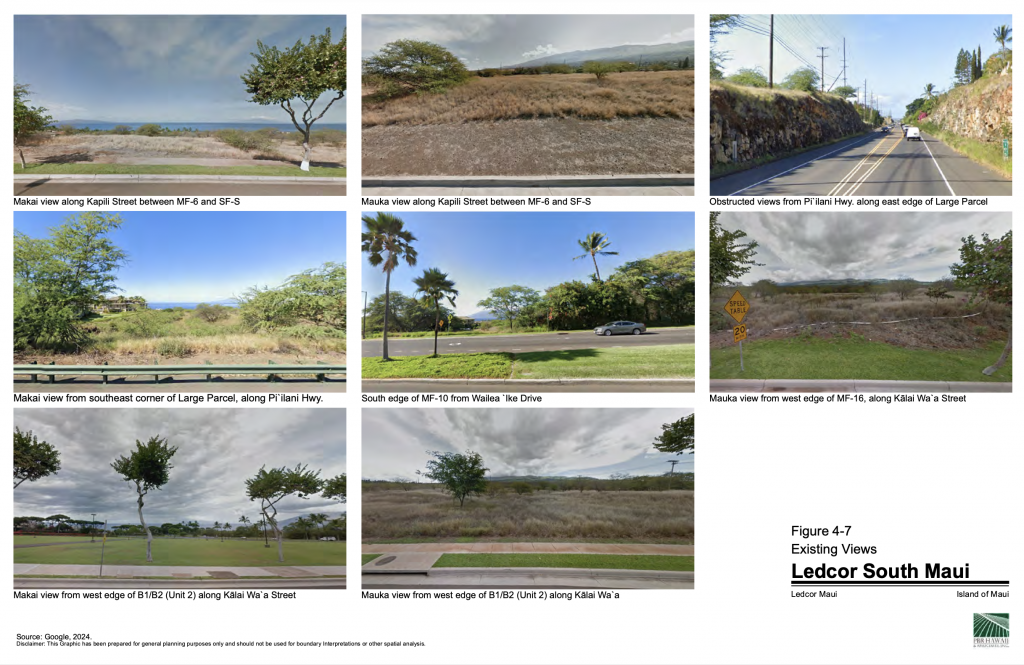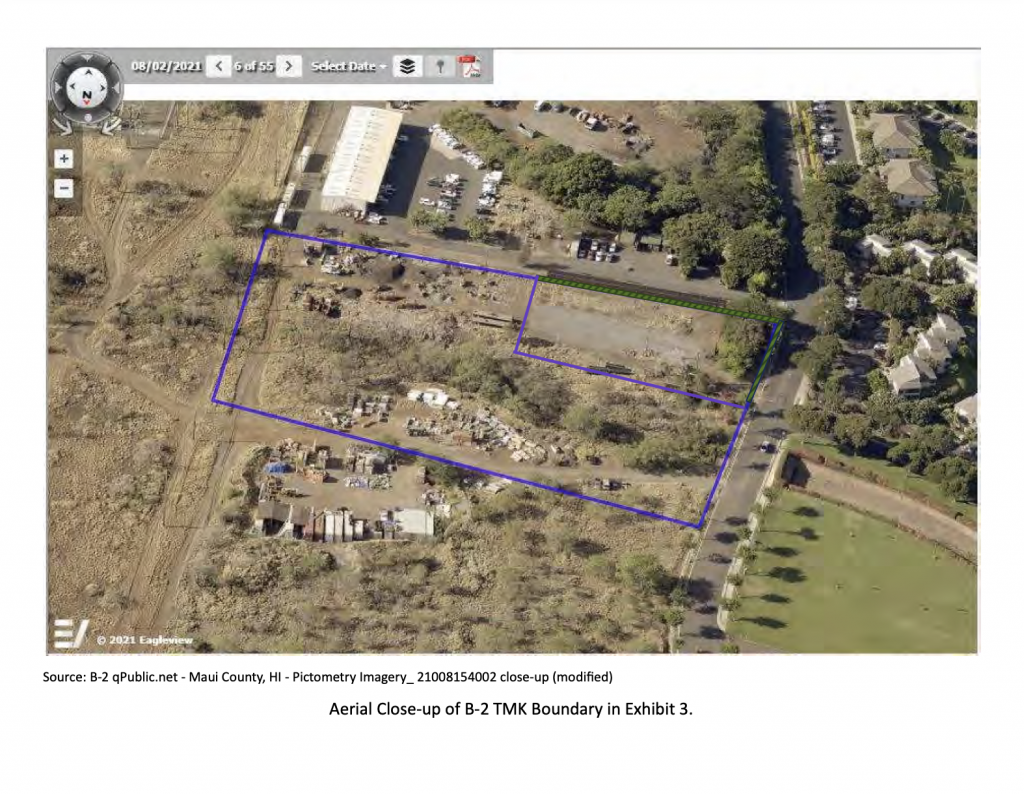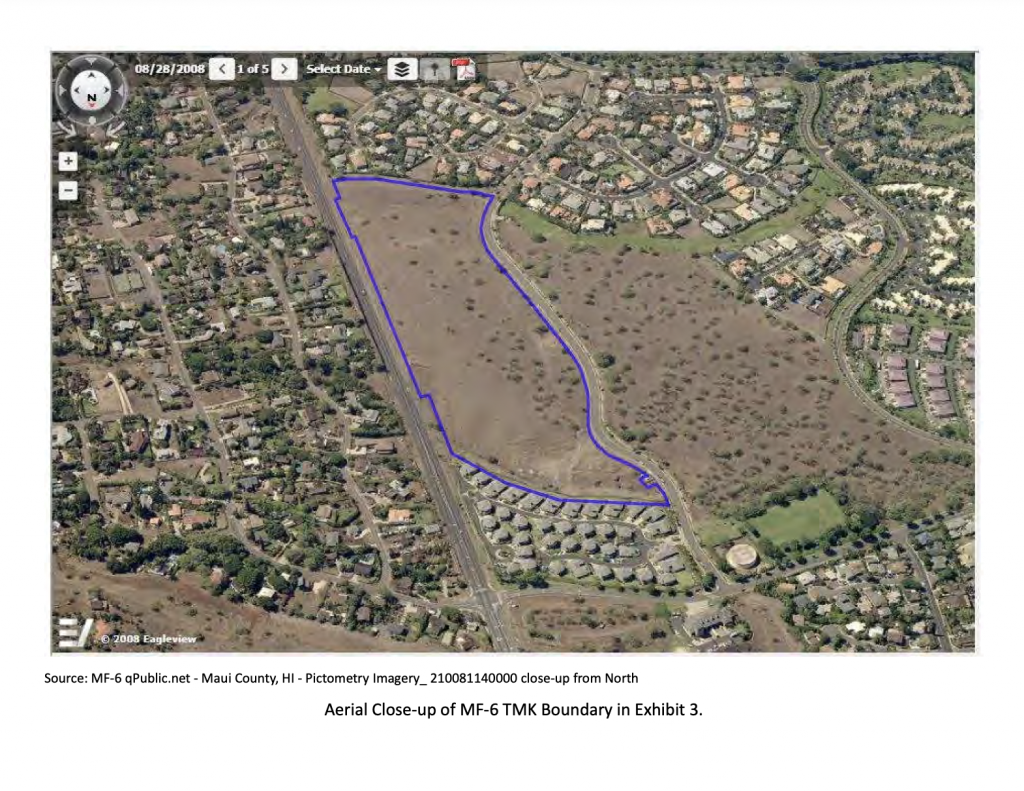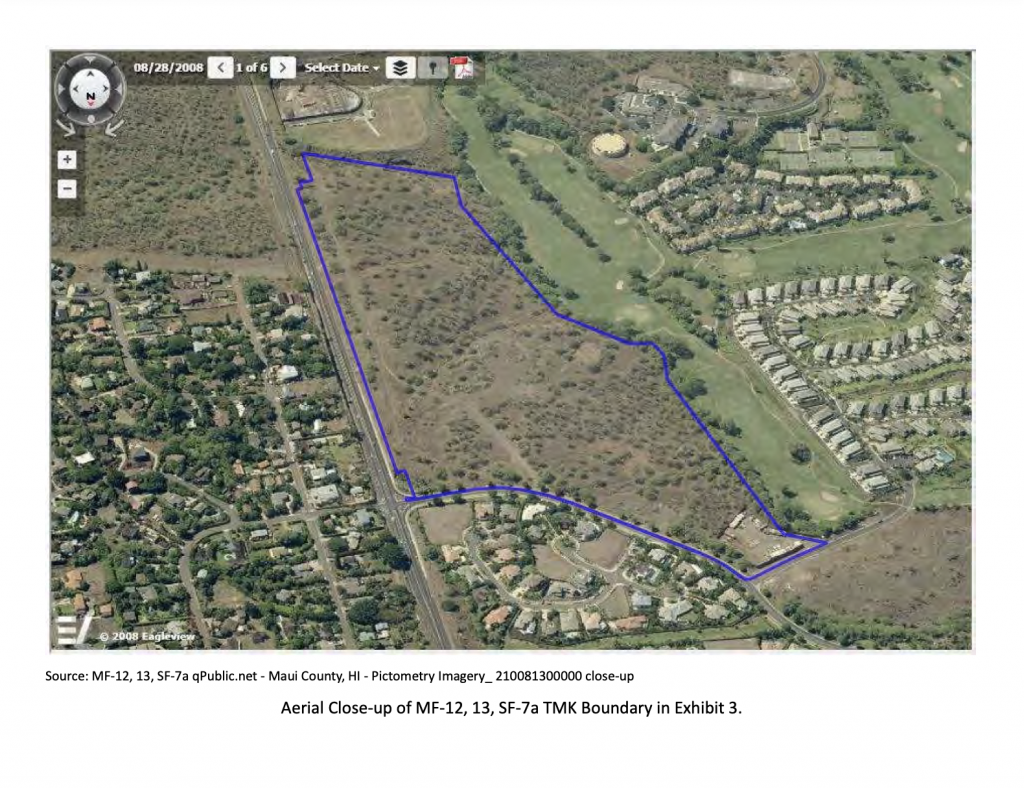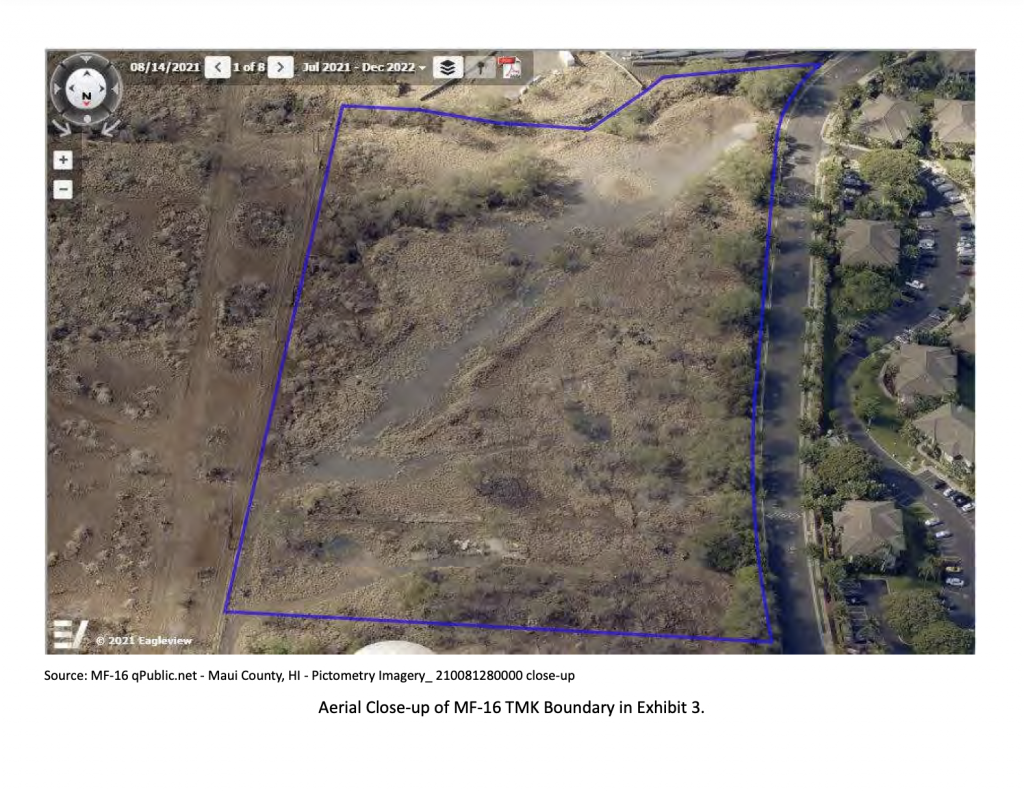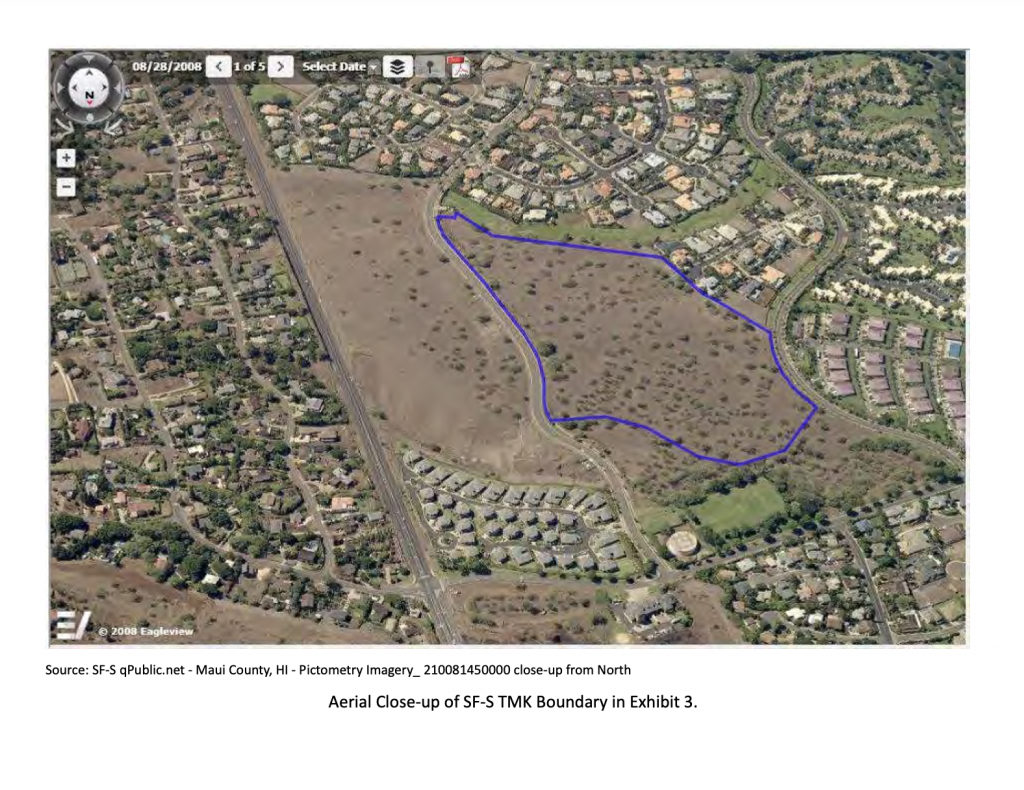Draft environmental impact statement for Wailea development published; includes workforce housing

The draft environmental impact statement (DEIS) for the completion of the master-planned Wailea Resort community and a neighboring lot in Kīhei was published today.
Although zoned for 2,137 residential units, the Ledcor Maui project proposes construction of a maximum of 975 residential homes, which includes the resort community’s first workforce housing units.
The project includes a mix of single-family and multifamily residential communities on eight properties. Ledcor is proposing the project and will be developing plans for these remaining owned and leased infill parcels in the Kīhei and Wailea Resort communities. Open spaces, amenities, and pedestrian paths will be integrated within these communities, according to the draft document.
Required workforce housing, park dedication, and related infrastructure improvements will also be provided and/or otherwise satisfied. The program will also include Ledcor’s fair share portion of the improvements to Piʻilani Highway at Kilohana Drive, according to the DEIS.
The draft reflects 14-months of work and research into the project area by a range of experts and includes numerous technical studies covering a range of topics from archaeology to traffic.
Only residential uses are being considered. Commercial or short-term rental uses are not included in the plans, despite some allowance of zoning for these uses. The proposed activities included in the DEIS are consistent with the Maui Island Plan and both the current, and proposed, South Maui Community Plans.
The state mandated public comment period of 45 days ends on April 8, 2024. Comments received during the public comment period will be included and addressed in the Final EIS. The DEIS is available online HERE. Instructions for commenting are available online at the Ledcor South Maui Permitting site HERE.
“Our team put many months of research and analysis into responding to the community input we received during the scoping period. This resulting DEIS is a thorough and extensive document, and we are pleased to share it with the community,” said Eric Gerlach, senior vice president of Ledcor Maui in a news release. “We encourage everyone to read the DEIS and provide comments. The EIS process allows for a more holistic approach, which is helping us better define our overall planning options.”
The project would bring workforce housing under Maui County Code 2.96 to the Wailea Resort community for the first time. Developers say this housing would be positioned for Wailea’s local workforce and provide much needed relief for Maui’s affordable housing shortage.
The Proposed Action will construct a portion of WFH units within the Wailea Resort community, allowing employees of area businesses an opportunity to live close to their workplaces, as well as purchase offsite WFH credits and pay in-lieu fees to the County to assist in the building of WFH units where it may be most needed.
In the DEIS, a scenario was analyzed where 900 market units would be built on site together with 75 WFH on site, 75 WFH off site credits, and 75 WFH paid via in-lieu fee to the County. The final quantity of workforce housing units built and/or satisfied through the in-lieu payment option will be determined at the various SMA and building permit stages and are dependent on the actual number of market units built.
The project proponent is committed to satisfying a portion of the WFH unit requirements on site, subject to final permitting, according to the DEIS.
“The need for affordable housing on Maui is critical. The EIS process helped us to identify and include Wailea’s first workforce housing site under the current code,” Gerlach said. “We are aiming for LEED Silver certification to demonstrate our commitment to implementing Hawaiʻi’s sustainability goals. We are also developing a robust stewardship plan that honors and protects significant cultural resources.”
The project represents the last components of Wailea’s master plan, which extends as far back as 1973.
“Ledcor Maui has been a community-minded landowner,” said Bud Pikrone, general manager of Wailea Community Association. “We look forward to their commitment for enhanced and safer pedestrian connectivity, workforce housing for the local workers, the planned expansion of the Kilohana / Pi‘ilani intersection, and other project related benefits.”
Bruce Uʻu, executive director of Maui Nui Empowered is enthusiastic about the progress on the project.
“I’m excited that Ledcor Maui has moved forward with this project and has the wherewithal to complete the work in the next 15 to 20 years. We need housing of all kinds on Maui, and the inclusion of workforce housing in Wailea is important to the local workers in that area… We need this investment in Maui, which will help generate jobs and much needed income for our county,” said Uʻu.
The multiple discontinuous parcels of the Proposed Action were located within several traditional boundaries, including the ahupuaʻa of Kamaʻole (Kula Moku), Paeahu (Honuaʻula Moku), and Palauea (Honuaʻula Moku). The majority of the area of the Proposed Action is located within the Paeahu Ahupuaʻ a, which is one of 20 ahupuaʻa in the Moku of Honuaʻula, according to the DEIS.
Sissy Farm-Lake, kumu hula and executive director of Maui Historical Society said Ledcor has “proven to be a generous supporter of local organizations and the Hawaiian culture.” She said, “They are dedicated to providing valuable support to cultural groups so that our traditions can be perpetuated for future generations.”
For more information, including an informational video on how to provide comments, visit https://bit.ly/LedcorDEIS (case sensitive). Comments can be submitted online at the website or by mail to: David Goode at Ledcor Maui LP, 590 Līpoa Parkway Suite 259, Kīhei, HI 96753 or Kimi Yuen at PBR Hawaiʻi, 1001 Bishop Street Suite 650, Honolulu, HI 96813. Comments are being accepted through April 8, 2024.
*Maui Now’s Wendy Osher contributed to this report.






